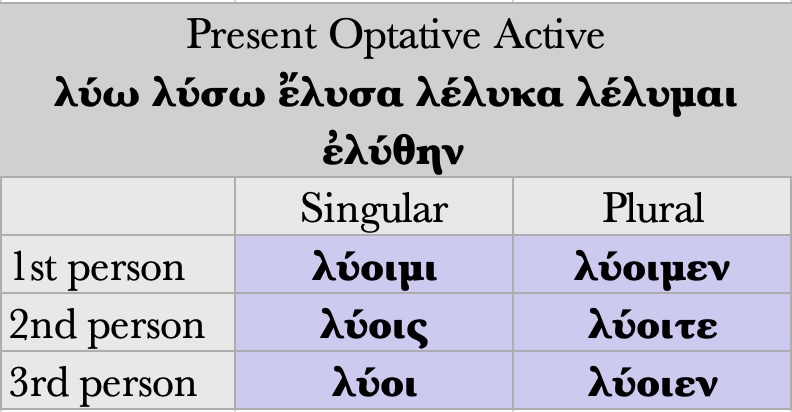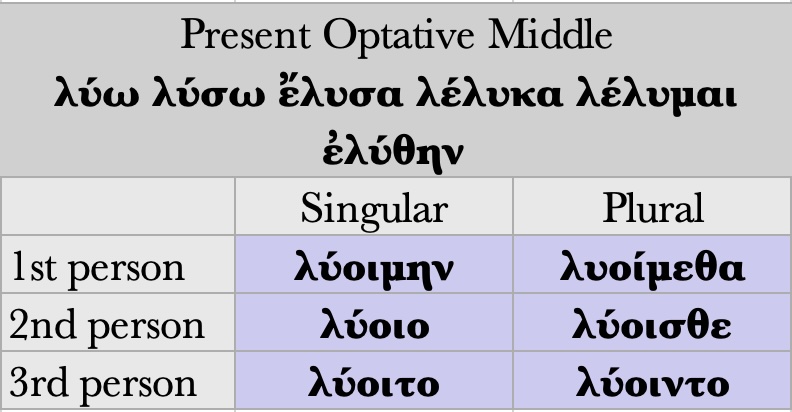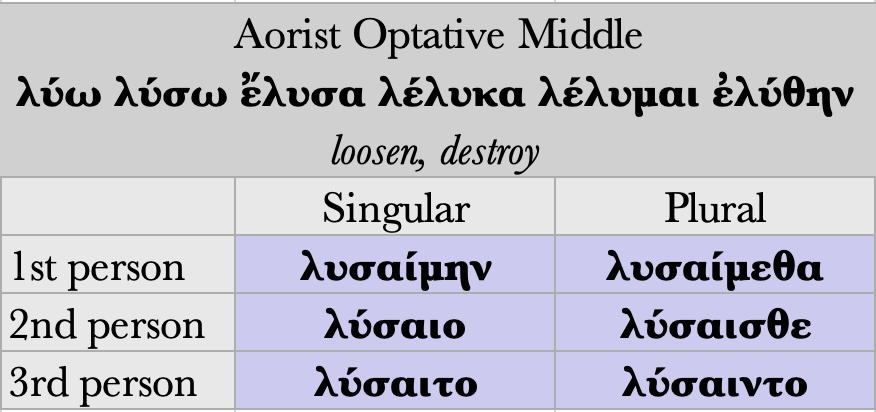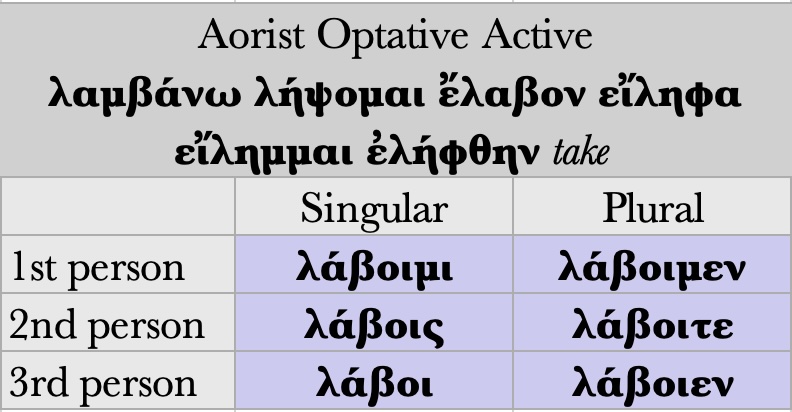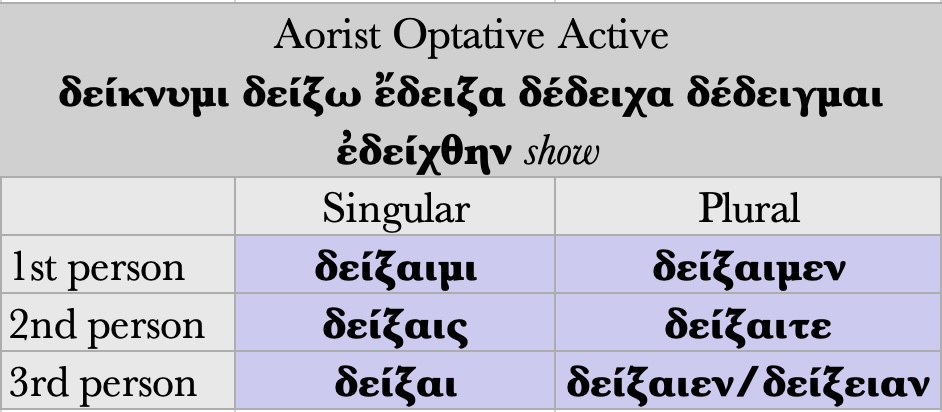47.8 Like the subjunctive, the tense of the optative is indicated by the TENSE STEM. Also like the subjunctive, the PRESENT and AORIST are the most common tenses that you will encounter. The rarer PERFECT optative forms are discussed separately below.
To see how to form the optative in the PRESENT and AORIST tenses, let’s take a look at these examples:
- λύω, λύσω, ἔλυσα, λέλυκα, λέλυμαι, ἐλύθην
- λαμβάνω, λήψομαι, ἔλαβον, εἴληφα, εἴλημμαι, ἐλήφθην
- δείκνυμι, δείξω, ἔδειξα, δέδειχα, δέδειγμαι, ἐδείχθην
Let’s begin with λύω, λύσω, ἔλυσα, λέλυκα, λέλυμαι, ἐλύθην
- present tense stem: λυ–
- aorist tense stem: λυσα–
- Note that for optatives, unlike subjunctives, the α of the –σα ending is preserved from the first aorist stem, to which the optative marker -ι is added.
47.13 Now let’s take a look at this verb, in the active voice: λαμβάνω, λήψομαι, ἔλαβον, εἴληφα, εἴλημμαι, ἐλήφθην
- present tense stem: λαμβαν–
- aorist tense stem: λαβ–
47.15 Finally, let’s take a look at this verb, in the active voice: δείκνυμι, δείξω, ἔδειξα, δέδειχα, δέδειγμαι, ἐδείχθην
- present tense stem: δεικνυ–
- aorist tense stem: δειξ–
Charts JPG
